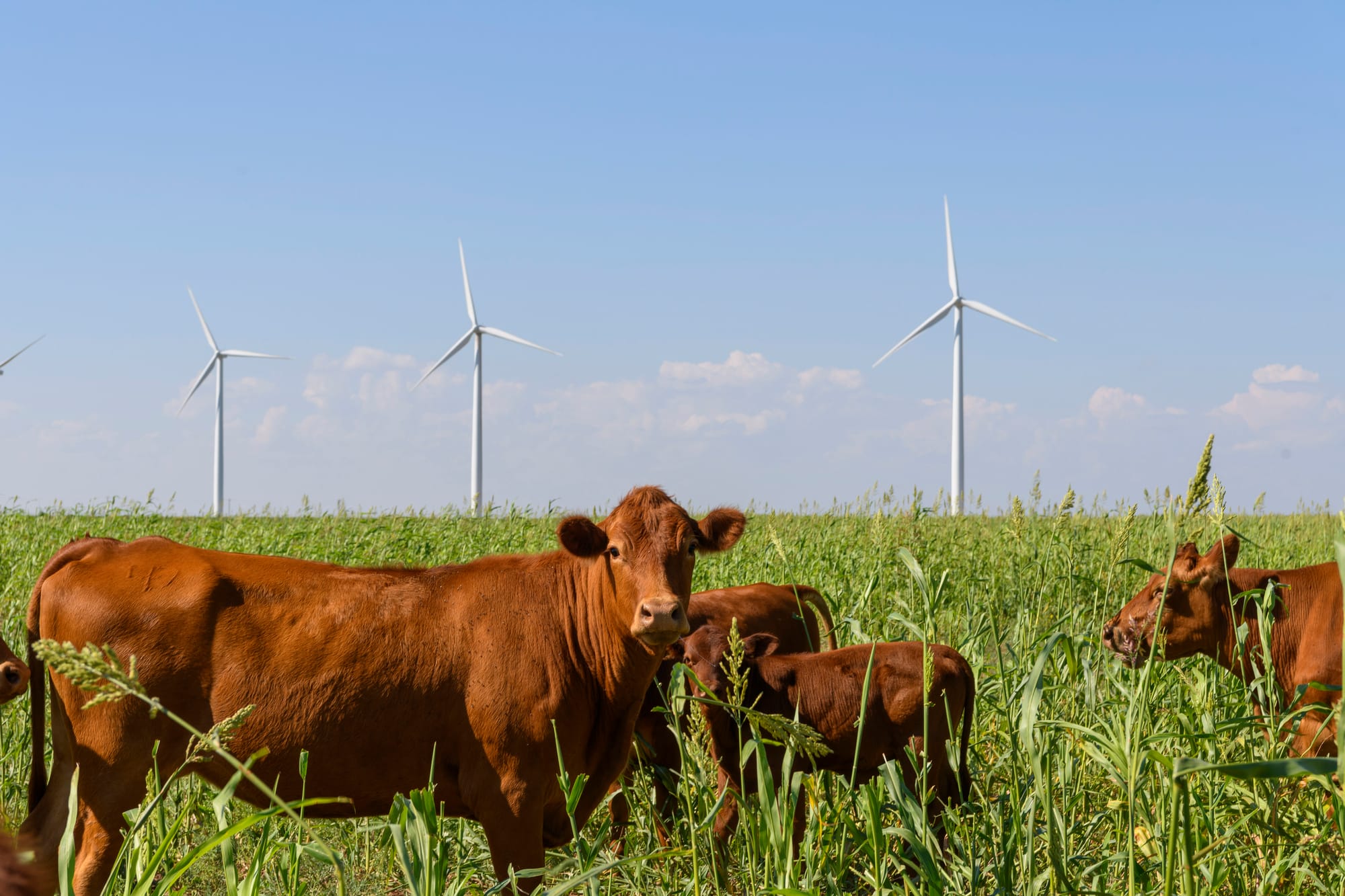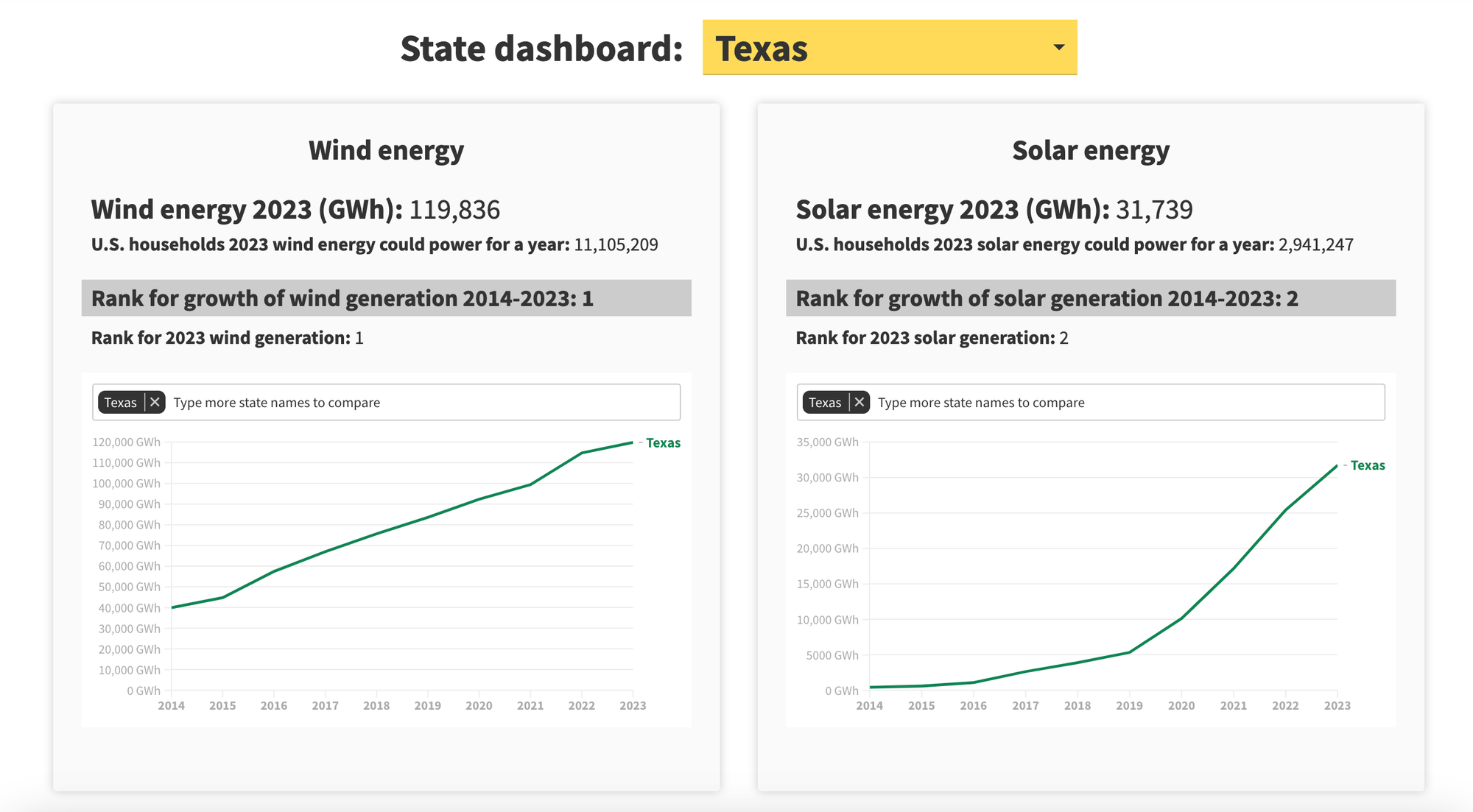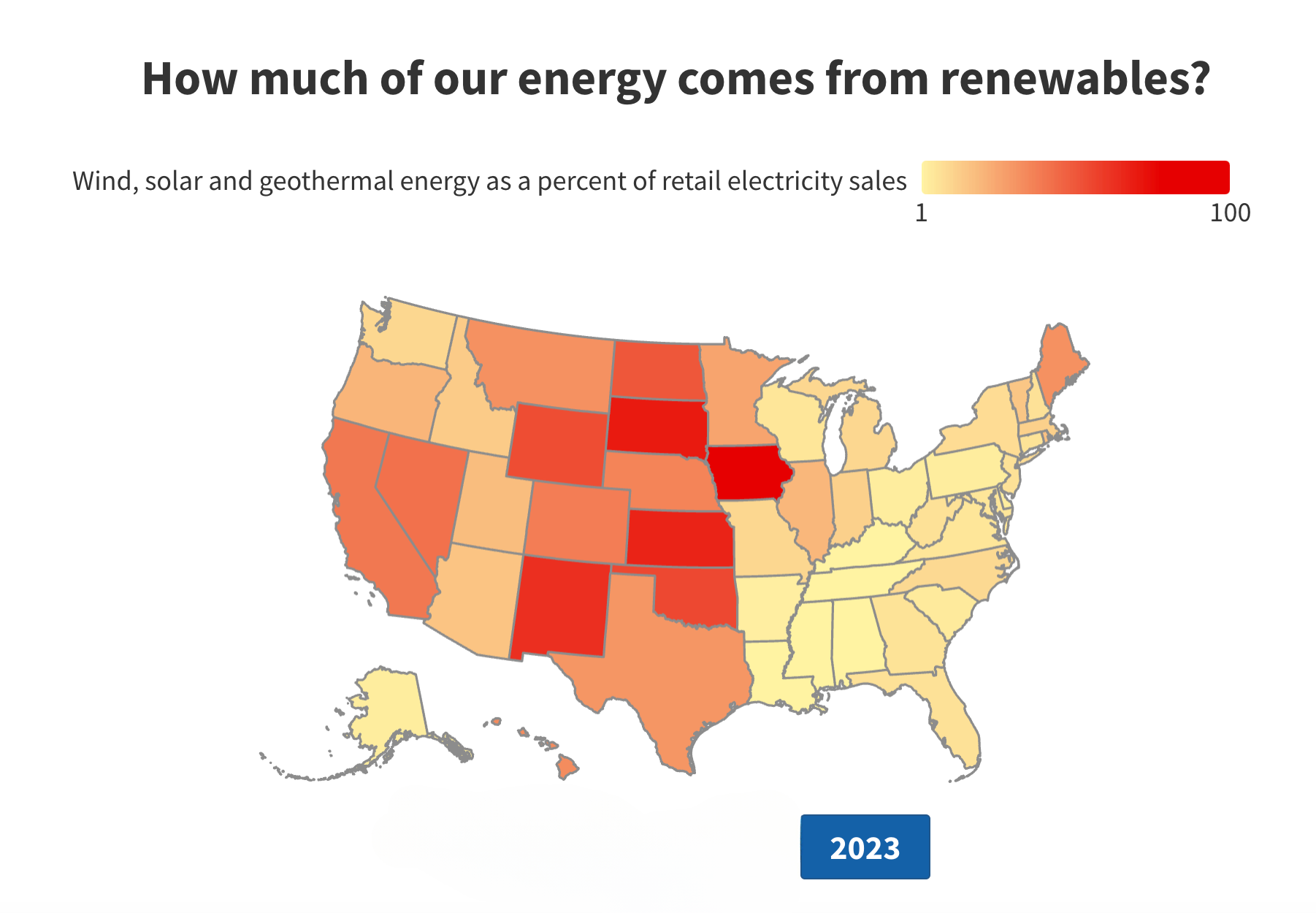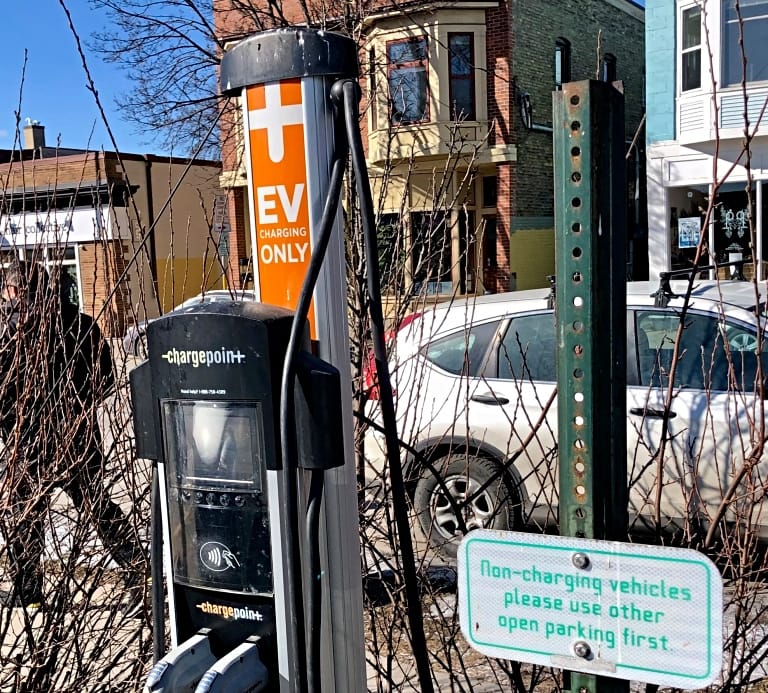‘Renewable energy growth is truly a 50-state story now’: New report shows big jump in solar, wind, EVs
A coalition of environmental groups finds U.S. renewable energy development has tripled in the past decade

Johanna Neumann was watching Monday Night Football with her husband when a commercial earlier this week caught her eye.
The 30-second ad featured actor and comedian Will Ferrell at what looks like a gas station but equipped with electric vehicle chargers instead of gas pumps. He’s gleefully dancing, twirling the charger and using it as a microphone when another EV driver honks the car horn and tells him to hurry up.
The commercial actually was for PayPal and had nothing to do with the number of registered EVs jumping to 3.3 million in 2023 — a 25-fold increase from 2014, according to a report released Wednesday from Environment America, a national network of 30 state environmental groups.
Neumann, who leads the group’s renewable energy campaign, said she loved the commercial because, “It was a totally normal experience.
“We’re at this moment where … they’ve gone from being a novelty to something that is normal in our landscape and will only become more normal as more and more people adopt EVs and see them on the road.”
The United States produced more than three times as much electricity from wind, solar and geothermal sources in 2023 than it did in 2014, according to the report, “Renewables on the Rise,” which Environment America has released annually since 2017.

The document is based on data from the U.S. Energy Information Administration and the Department of Energy.
The report is being released at a pivotal time: The presidential election is less than two weeks away, and the outcome could put the United States on a continued path towards lower greenhouse gas emissions — or a reignited reliance on fossil fuels, which are primarily responsible for climate change.
And the United States still gets roughly 60% of its electricity from fossil fuel sources, according to the EIA, with 40% coming from natural gas, or methane, a fuel that is subject to wide price swings.
“If we keep moving in the right direction, there’s no reason that this … the biggest economic revolution we’ve seen in generations in this country, there’s no reason it shouldn’t continue,” said Bob Keefe, executive director of E2, a national nonpartisan group of more than 100,000 business leaders that advocates for a cleaner economy and environment.
Broadly, the report’s results are not surprising: The Midwest as well as California and Arizona boast higher amounts of renewable energy because of clean energy friendly policies and the abundance of wind and solar. Yet, even the Southeast, which continues to lag in renewable energy growth, saw a 33-fold increase in solar across seven states. That’s enough solar to power 4.5 million households, Neumann said.
“That’s real energy making a real impact on the grid,” she said in a Tuesday interview with Floodlight.
“Renewable energy growth,” Neumann added, “is truly a 50-state story now.”

Much of that growth in the past two years stems from the Inflation Reduction Act, the Biden Administration’s signature climate law. The historic act is the most aggressive climate policy in U.S. history, rolling out billions in tax breaks and other incentives with the goal of cutting economy-wide carbon emissions 40% by 2030.
Environment America’s report reinforces earlier assessments that Republican-led states are bearing the most fruit from the IRA. Solar panel and battery makers have cropped up in the Midwest and Southeast, and auto manufacturers are moving towards an increasingly hybrid or all-electric product in the coming decade.
Indeed, four of the top five states that produce the most of their electricity from renewable sources — Texas, California, Iowa, Oklahoma and Kansas — are controlled by GOP-run Legislatures.

With the exception of California, “Those generally aren’t states where people say, ‘Oh, I’m sure those are the renewable energy leaders in America,” Neumann said.
Barriers remain, particularly in the Southeast, where half of the nation’s top 10 electric utilities, based on generation capacity, are based. These companies often hold powerful political sway over state lawmakers and the utility commissions that regulate them, throwing up barriers to rooftop solar and other forms of renewable energy that would put customers in charge of their own power generation.

Alabama, for example, still has one of the lowest rates of renewable energy adoption, despite being one of the sunniest states in the nation. Utility regulators also signed off on the request by the state’s largest power company to tack on a monthly fee to rooftop solar users, which cuts into the economic benefits of having solar.
“(There’s) a set of states where utility policy or energy policy has just not, to this point, been renewable friendly,” said Tony Dutzik, associate director and senior policy analyst with Frontier Group, a company that works for a more sustainable country.
“That can be anything from utility policies that fail to adequately or fairly compensate people who install rooftop solar on their property to states where they're actively subsidizing the continued operation of dirty fossil fuel plants instead of transitioning to the cleaner energy sources of the future,” said Dutzik, who worked on the report.
The cost of generating solar and wind energy are lower than coal and cleaner than burning fossil fuels. But they are intermittent energy sources.

Abe Scarr, the energy and utilities program director for PIRG, a nationwide consumer advocacy group, said electric utilities need to invest in the infrastructure to support this “massive energy transition.”
“It's not a question of whether we need to be making investments,” said Scarr, also the state director for Illinois PIRG. “It's what investments do we need to be making?”
Floodlight is a nonprofit newsroom that investigates the powerful interests stalling climate action.


